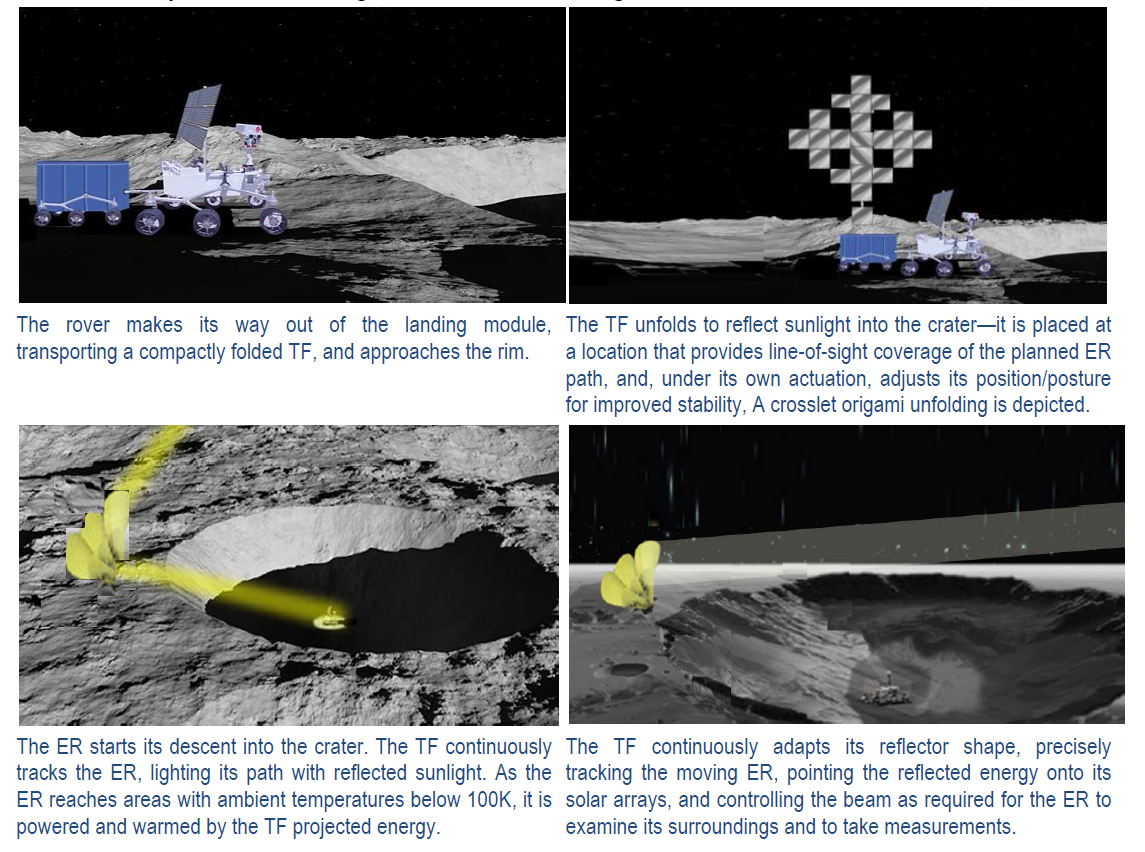

Announced yesterday, NASA is moving ahead with funding to study several ambitious space research projects, including one that would transform an inhospitable lunar crater into a habitat for robots — and eventually, human explorers. Located on the moon’s South Pole, Shackleton Crater isn’t just prime real estate for terraforming experiments, it’s Optimus Prime real estate. NASA wants to fill the crater with solar-powered transformers, and then use the fleet of robots to turn the crater into a miniature hospitable environment.
Shackleton Crater is uniquely qualified as a location for terraforming in the small scale. Named after the famous explorer of Earth’s own south pole, the crater covers about 130 square miles, or roughly twice the size of Washington, DC. It is surrounded on all sides by peaks that rise over 14,000 feet above the surface of the crater. Inside this moon-bowl, scientists have already found water, which is essential for any future human habitation.
Before the humans come the robots. To function, robots need electrical power and warmth, and with the right equipment, the sun can provide both, with a little help. In darkness, the crater is about 100 degrees Kelvin, or -280 fahrenheit, but a series of solar reflectors could capture light from the peaks on the crater rim and then reflect it down into the crater, warming and fueling solar-powered rovers at the same time.
These reflectors would be carried around the crater rim by other rovers, unfolding and transforming into useful shapes when needed. A single reflector 130 feet in diameter could send light over six miles into the crater, powering a rover (or a fleet of several Curiousity-sized rovers) with up to one megawatt of energy and preventing them from freezing. Thanks to their height, there is always at least one point on the peaks on the crater rim that receives sunlight, so work could be done continuously in the crater.
Should this plan all work out, several transforming robots with reflectors would work on the edge of the crater, beaming sun in, while robots inside the crater built something close to an “oasis” on the moon. Or at least, an oasis for lunar robots.
The project was awarded in NASA’s Phase II funding, which provides up to $500,000 for two-year-long studies, so the next task is designing a workable reflector that fits into a cube slightly larger than three feet each side, weighing less than 220 pounds, and that unfolds to cover 10,700 square feet. If it all works out, the robots shall inherit the moon.
